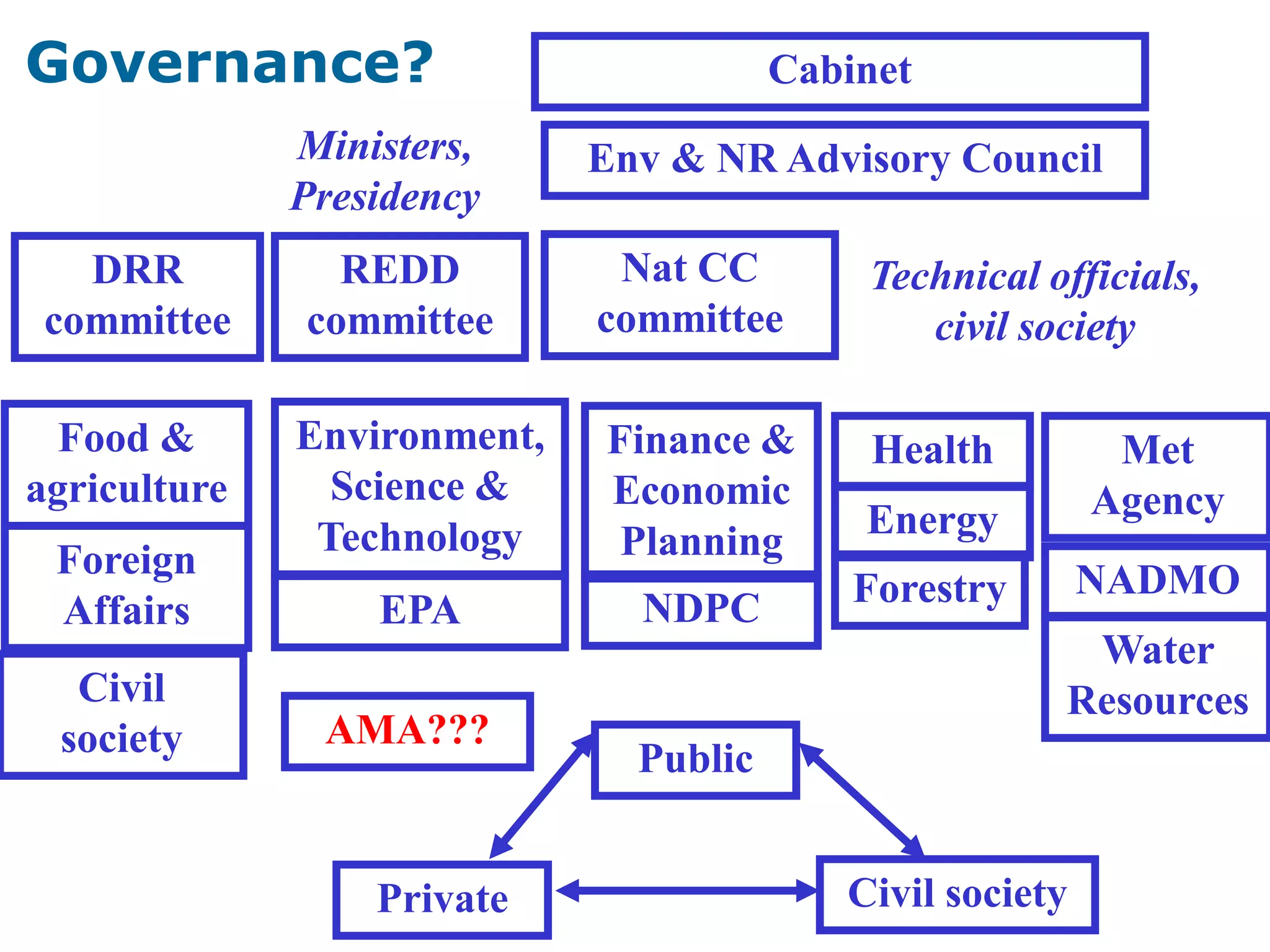This document discusses climate change and development in Ghana. It notes that Ghana needs a comprehensive vision and cross-government approach to address opportunities and challenges from climate change. While technical capacity is limited, climate change could significantly impact Ghana's agriculture, energy, infrastructure, and coastal areas. The document calls for Ghana to develop climate compatible growth plans that integrate adaptation, mitigation, and development over both long and short term time horizons with support from both domestic and international partners.
















